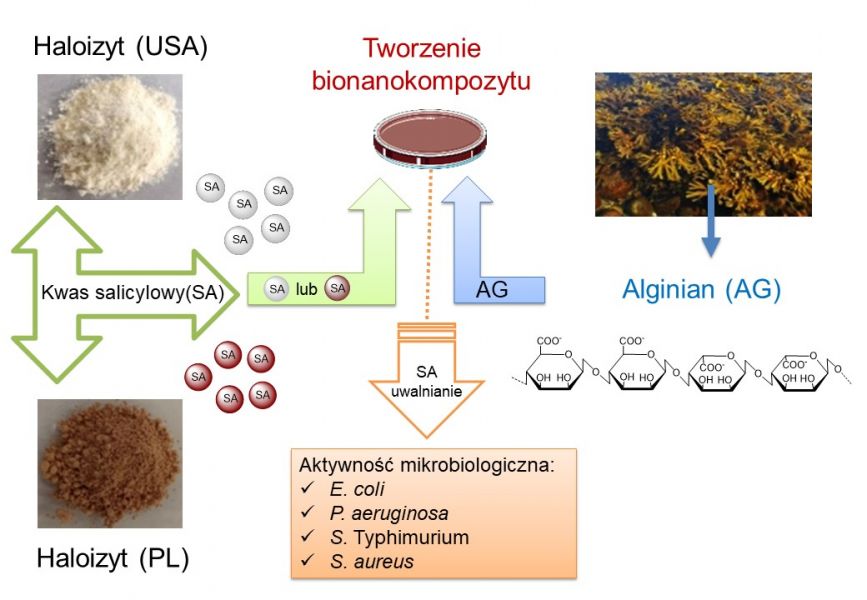Joanna Kurczewska, Magdalena Ratajczak, Marzena Gajecka: Alginate and pectin films covering halloysite with encapsulated salicylic acid as food packaging components, Applied Clay Science, 214, 2021,106270;
Contamination with spoilage microorganisms is important risk in food packaging. Microbiological contamination of food is not only responsible for shortening the shelf life of a given product, but carries the risk of foodborne diseases. For this reason, scientific research on effective packaging additives that protect food products against spoilage microorganisms during storage is very important. A properly designed material takes into account the type of food for which it is dedicated, as well as its antimicrobial effectiveness over time.
The research described in the article focuses on bionanocomposites containing halloysite and biopolymer. Halloysite is an aluminosilicate clay mineral of natural origin, with excellent adsorption properties. Therefore, it is often used as a carrier of active molecules. In the present study, two halloysite types derived from different deposits and of different morphology were used. The minerals were initially applied for loading of active agent with bactericidal and antiseptic properties - salicylic acid, and then entrapped into selected biopolymers – alginate extracted from algae and pectin from citrus peel. The results obtained showed that the effectiveness of the bionanocomposites was mostly dependant on the type of biopolymer. Both, the stability and microbiological activity of alginate materials were higher compared to pectin materials. Moreover, alginate films released salicylic acid in more controlled manner and over a longer period of time, especially in environment mimicking food with lipophilic properties. Thus, the proposed composite alginate material containing halloysite with the active component could potentially find application as food packaging additive with antimicrobial properties.


